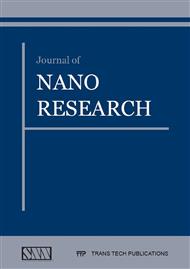p.1
p.11
p.23
p.29
p.38
p.46
p.57
p.63
p.73
Synthesis and Characterization of Silver Nanoparticles Using Azadirachta indica Leaf Extract and their Anti-Fungal Activity against Malassezia species
Abstract:
Fungal skin infections are caused by different types of fungi among these Malassezia species is the common cause of the dermatitis in human and animals. In the present study, the skin scraping samples were collected from human and dog. The samples were inoculated into Saboraud and potato dextrose broth to achieve the fungal growth. The fungal species were isolated and characterized by colony morphology, potassium hydroxide (KOH) and lacto phenol cotton blue staining. Genomic DNA was isolated and the 28S rRNA was amplified from fungal species using the universal primers and the amplified PCR products were subjected to sequencing. The sequence analysis of 28S rRNA reveals that two sequences were similar to Malassezia globosa and one sequence is similar to Malassezia pachydermatis which causes dermatitis in human and dog, respectively. Further study was carried out to assess the antifungal activity of the silver nanoparticles synthesized through green synthesis using Azadirachta indica leaf extract and characterized by UV-Visible spectrophotometer, Transmission electron microscope (TEM), X-Ray diffraction spectrophotometer (XRD) and Fourier transform infrared spectrophotometer (FTIR). The characterized silver nanoparticles inhibit the growth of Malassezia species by forming zone of clearance. This study suggests that the silver nanoparticles could be an alternative to treat the fungal infections.
Info:
Periodical:
Pages:
1-10
Citation:
Online since:
September 2016
Authors:
Price:
Сopyright:
© 2016 Trans Tech Publications Ltd. All Rights Reserved
Share:
Citation:


